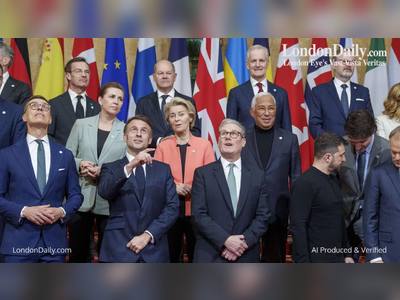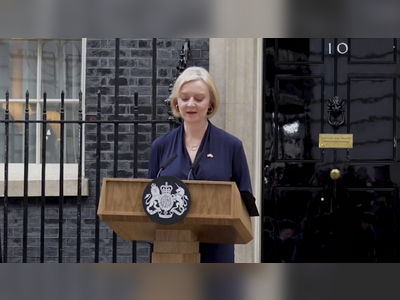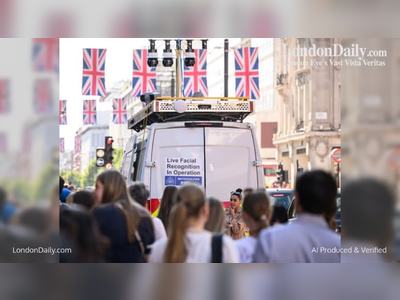UK Government to Mirror Denmark’s Tough Immigration Framework in Major Policy Shift
Reforms will draw on Danish model to limit settlement rights, tighten family reunification and reduce asylum inflows
The UK government is preparing a sweeping immigration overhaul modelled directly on the stringent system adopted by Denmark, reflecting a dramatic shift in policy and signalling a hardening of the country’s approach to asylum and migration.
The proposed measures, soon to be announced, aim to restrict permanent settlement rights, narrow family‐reunification criteria and cut incentives for irregular migration.
Officials have studied Denmark’s resonance in driving asylum claims to their lowest level in four decades, particularly by granting only temporary protection and conditioning family reunions on strict language and financial tests.
In 2022, for example, Denmark ordered the return of some 1,200 Syrian refugees after deeming the region safe, a move that drew criticism from international bodies but reinforced Copenhagen’s deterrence paradigm.
In Britain the impetus for change has grown amid rising public concern over Channel small-boat crossings and a mounting political challenge from the Reform UK party, which has made migration its central offering.
With recent polls showing migration ahead even of the economy as a voter worry, the government is under pressure to reclaim the agenda and appeal to voters in traditionally left-leaning “red wall” constituencies.
The Danish system requires refugees to meet stringent criteria to bring dependants—both partners must be at least twenty-four years old, pass a Danish language test and have avoided welfare benefits for three years.
Applicants must also provide a financial guarantee.
Critics argue this limits rights for vulnerable families and may disproportionately affect non-Western migrants.
The Danish government defends the rules as necessary for integration and social cohesion.
On the British left some Labour Members of Parliament have dismissed the plan as a “dead end—morally, politically and electorally,” warning it undermines humanitarian commitments and plays into far-right narratives.
Others, particularly those in electorally exposed areas, say failing to reform risks handing over seats to Reform UK should it gain power.
Analysts note that Denmark’s population, geography and political system differ significantly from the UK’s, meaning direct transplantation may prove challenging.
The UK’s White Paper published in May committed to creating a “controlled, selective and fair” immigration system and raised the qualifying period for settlement in some cases, though it did not explicitly adopt the Danish model.
The forthcoming reforms mark the clearest signal yet that the UK intends to follow Copenhagen’s lead in fortifying borders and restricting routes to long-term residency.
As the government prepares draft legislation, it faces the task of balancing tougher controls with the UK’s commitments to human rights and refugee law.
The coming months will be critical in defining whether Britain can replicate Denmark’s immigration outcomes without replicating its political and social tensions.
The proposed measures, soon to be announced, aim to restrict permanent settlement rights, narrow family‐reunification criteria and cut incentives for irregular migration.
Officials have studied Denmark’s resonance in driving asylum claims to their lowest level in four decades, particularly by granting only temporary protection and conditioning family reunions on strict language and financial tests.
In 2022, for example, Denmark ordered the return of some 1,200 Syrian refugees after deeming the region safe, a move that drew criticism from international bodies but reinforced Copenhagen’s deterrence paradigm.
In Britain the impetus for change has grown amid rising public concern over Channel small-boat crossings and a mounting political challenge from the Reform UK party, which has made migration its central offering.
With recent polls showing migration ahead even of the economy as a voter worry, the government is under pressure to reclaim the agenda and appeal to voters in traditionally left-leaning “red wall” constituencies.
The Danish system requires refugees to meet stringent criteria to bring dependants—both partners must be at least twenty-four years old, pass a Danish language test and have avoided welfare benefits for three years.
Applicants must also provide a financial guarantee.
Critics argue this limits rights for vulnerable families and may disproportionately affect non-Western migrants.
The Danish government defends the rules as necessary for integration and social cohesion.
On the British left some Labour Members of Parliament have dismissed the plan as a “dead end—morally, politically and electorally,” warning it undermines humanitarian commitments and plays into far-right narratives.
Others, particularly those in electorally exposed areas, say failing to reform risks handing over seats to Reform UK should it gain power.
Analysts note that Denmark’s population, geography and political system differ significantly from the UK’s, meaning direct transplantation may prove challenging.
The UK’s White Paper published in May committed to creating a “controlled, selective and fair” immigration system and raised the qualifying period for settlement in some cases, though it did not explicitly adopt the Danish model.
The forthcoming reforms mark the clearest signal yet that the UK intends to follow Copenhagen’s lead in fortifying borders and restricting routes to long-term residency.
As the government prepares draft legislation, it faces the task of balancing tougher controls with the UK’s commitments to human rights and refugee law.
The coming months will be critical in defining whether Britain can replicate Denmark’s immigration outcomes without replicating its political and social tensions.









